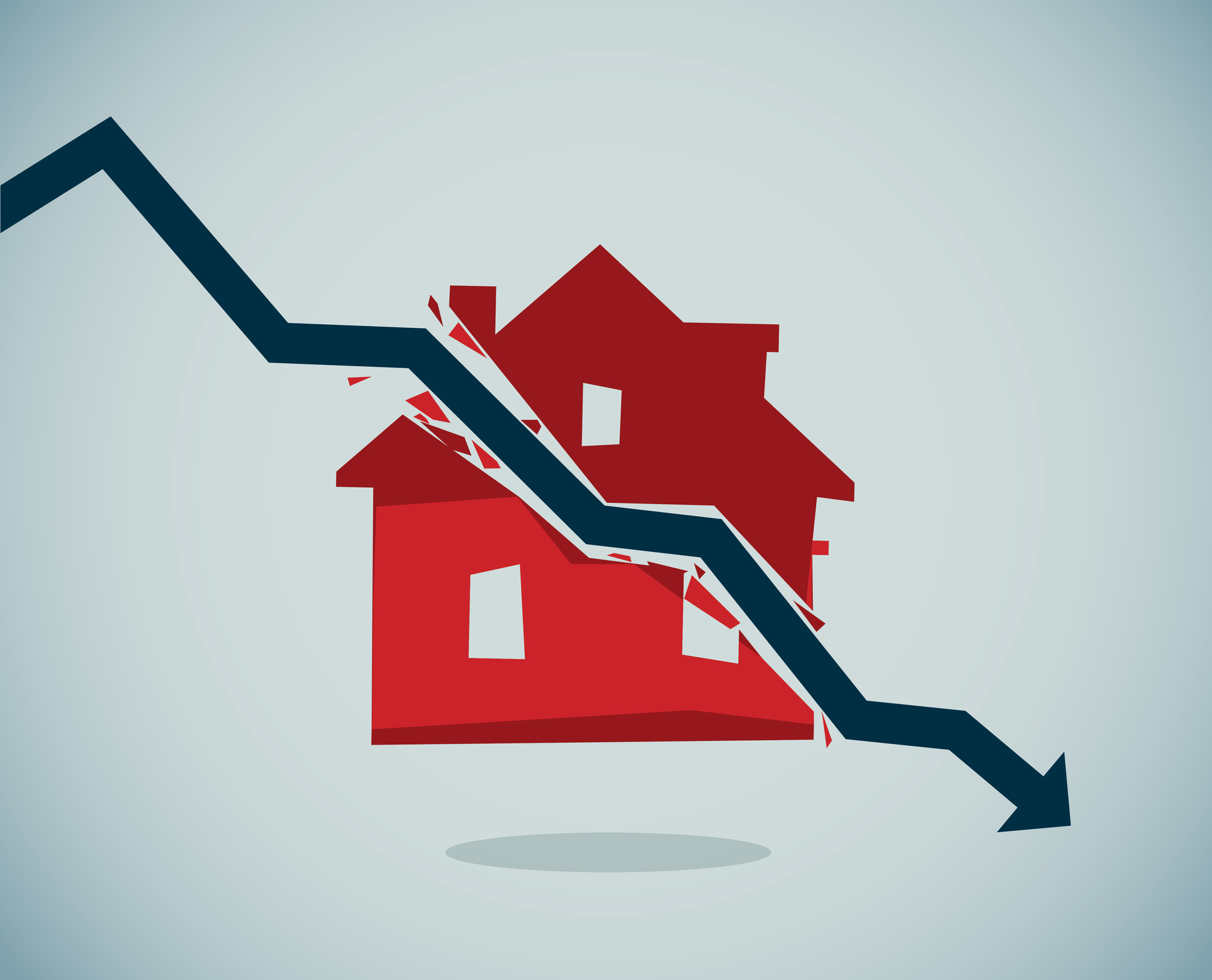Risk in Retirement: What’s the Right Level for You?
Your situation and retirement goals call for an investment approach that takes into account your risk tolerance, risk comfort and capacity for risk.


We often hear people say that they are good as long as things just keep on moving up and to the right. If only that were the reality.
Of course, if given long enough, that’s what happens. The key part of that statement is “if given long enough.” Recessions happen. When you are accumulating wealth, recessions can be helpful, but in retirement they are not. Recessions generally highlight and bring about the realities of downside risk.
The word “risk” can sound a lot scarier in retirement, especially when you’re switching from getting a dependable paycheck at work to needing to use assets you’ve saved over many years. At that point, it’s time to break down the different types of risk and determine how they apply to your financial situation, investments and goals in retirement.

Sign up for Kiplinger’s Free E-Newsletters
Profit and prosper with the best of expert advice on investing, taxes, retirement, personal finance and more - straight to your e-mail.
Profit and prosper with the best of expert advice - straight to your e-mail.
There are three ways you can think about financial risk:
- Risk capability or capacity. This is the idea that you can take more risk in the markets than most people. For example: You have a $100,000 annual lifestyle in retirement and $100,000 of annual income through a combination of Social Security, pension, rental properties and other predictable income sources. Because of this, you have a greater capacity for risk in the market because you don’t need to depend on your investment assets to fund your lifestyle.
- Risk comfort. You can handle a loss in the market without getting emotion or making a knee-jerk decision, such as selling stocks when the market is down.
- Risk tolerance. Your tolerance for risk can be determined by understanding how much loss you’re willing to take in order to realize a gain. The less you’re willing to lose, the lower your risk tolerance. People typically want a bigger gain than the loss they’re willing to take.
Some people have an incredible capacity to take risks but don’t want to take any. Others don’t have the capacity for risk but bet it all anyway. If they understand the risks and are OK with them, then so be it. But most haven’t really thought about the underlying risks enough.
The Merriam-Webster dictionary defines risk as the possibility of loss or injury: peril. That’s a rather stark definition, but it’s fundamentally accurate. In investing terms, risk can be measured as the deviation from an expected average return. In other words, the greater the deviation, the greater the risk. For example, cash has low risk but also low expected return. Stocks have high risk, but higher expected returns.
Beware of — and prepare for — a market pullback
This is not a statement about fear. Rather, it’s one about reality.
The stock market is at or near all-time highs. At the same time, millions of people are retiring, are within 10 years of retirement or have retired recently. Anyone in those categories should pay extra attention to their equity risk level. Why? Because while the markets could keep going up, at some point there will be a pullback. And how severe the pullback is, when it happens and how long it takes for the markets to come back are all unknowns.
It may also be prudent to be somewhat mindful that the 100th anniversary of the Great Depression is happening in five years (2029). From an investment standpoint and comparing it to rare and disastrous weather occurrences, that was the equivalent of a 100-year event. Could something similar happen again in the next few years? Or has it happened already? People will point to two tough recessions we had in the 2000s, but those were nothing like the Great Depression.
The point? With lots of debt at all levels (government, corporate and personal), plus economic and geopolitical variables in our current times, it’s essential to plan your equity allocation as wisely as you can relative to your preferred risk level. That’s because in retirement you have to rely on your assets to provide the cash flow you need.
In terms of where to put money besides stocks, you currently have choices that weren’t as appealing in recent years. That’s because interest rates are higher now than they have been in the past, especially when you were earning 1% to 2% on savings. Over the past few decades, the best — if not the only — answer for investing was stocks.
A large segment of investors has limited experience with dangerous market conditions, and they don’t know how they would handle a market pullback. It’s not a question of if a pullback comes, but when, how long and how often. Meanwhile, the financial industry has perhaps allowed people to get a bit more exposed to equities than might make sense for their situations. Due to low interest rates, there weren’t great options for “safer” money — things like cash, CDs, Treasuries, bonds or annuities — while stock returns lured more money into the market.
Three allocation approaches to equities
At a time when markets are highly valued and at or near all-time highs, it’s appropriate for someone who is about to retire or retired to assess their risk level in equities.
Three conventional or “rule-of-thumb” ways people think of allocating their stock investments are:
- The 100-minus-your-age formula. For example, if you’re 65 years old, subtracting your age from 100 equals 35. This means 35% of your money should be invested in stocks. However, many experts said this made people too conservative with their assets.
- The 110-minus-your-age formula. Using the example above, subtracting 65 from 110 means 45% of your money should go into stocks. This formula was designed to adapt to longer life-spans. This may still be too conservative for most people, but it suggests many people might be allocated too much to equities.
- The 60/40 portfolio. This formula advocates for allocating 60% of your portfolio to stocks and 40% to bonds. It also calls for investors to reallocate regularly.
None of these rules of thumb is perfect, and none is ideal or tailored to a specific person and the way they think. They also don’t allow for flexibility that may be required in a specific market environment. This can sometimes lead to investors selling stocks when they are down, which is a problem, as that is when loss occurs. (Remember the Merriam-Webster definition of risk.)
Your situation and retirement goals may call for a different approach. It comes back to weighing your risk tolerance, risk comfort and capacity for risk.
Can a timeline approach work?
One different approach to allocation starts with looking ahead at your timeline in retirement. Think about the first decade of your retirement and how much money you’ll need from your assets, then repeat the process for your second and third decades. You can then think about investing the money more conservatively for the first decade, maybe a mix for the second and possibly be more aggressive for the third decade and beyond. The longer your time horizon, the greater risk you can take as you get comfortable with the likelihood of positive returns over longer periods of time.
Another way is to look to history as a guide and set yourself up with up to 15 years of “safe” money, meaning you won’t have to touch equities during that time span — neither cashing them in nor selling them. Stocks have historically not gone down over 15 years, even when they’ve been down, back up, down and back up again. If you had to sell stocks in the midst of those fluctuations, you would have experienced a loss.
If you don’t have to sell stocks for that length of time, you’ve largely reduced your risk while having the opportunity for upside. The only way you’d fit Merriam-Webster’s risk definition of “loss or injury” is if you sold your stocks when the market was down. Though there are no guarantees, throughout history markets have come back from pullbacks to enter a new period of growth.
Traditional formulas and safe money
The traditional formulas of 100 minus your age, 110 minus your age and the 60/40 portfolio ignore individuals’ risk tolerance, risk capability/capacity and risk comfort. For example, let’s say you have a lot of risk capacity, with $10 million in savings and a lifestyle that requires $100,000 per year from assets. You also want 15 years of safe money. That means you need to have $1.5 million in safe money, plus you could have around $8.5 million in equities. Some people might say that it’s nuts to have so much in the market, but it’s maybe not so nuts if you have enough safe money to get you through 15 years, and you have the fortitude to let equities do what they do over long periods.
Along those same lines, someone who has $3 million with a $100,000 per-year need from assets might want $1.5 million in safe money and $1.5 million in equities. There’s no right or wrong way to allocate your retirement money, but there is a mix of art and science to get to the appropriate approach for you. That’s why it’s important to have a strong understanding of how you want your money to work for you at different stages of retirement.
Once you have the right amount of safe money for your comfort level, you also need a plan to determine under what conditions you would use that safe money to ensure you have it for use during down markets when they happen. The reality is that during down markets, you may need to lower your allocation to safe money and then replenish it later after markets have rebounded.
There are other important layers to having a good comprehensive integrated retirement
plan, like what types of accounts to own the safe money in. However, the first thing to do is determine if you are allocated in a way that makes sense to you. The goal is to avoid the “wish I had” thoughts and instead say, “I’m glad I did,” whether that’s decreasing or increasing your risk.
Dan Dunkin contributed to this article.
The appearances in Kiplinger were obtained through a PR program. The columnist received assistance from a public relations firm in preparing this piece for submission to Kiplinger.com. Kiplinger was not compensated in any way.
These materials are for informational purposes only. It is not intended to provide, and should not be relied on for, any tax or legal advice. Please consult a qualified professional before making decisions about your financial situation. The specific tax consequences of any investment or strategy will depend on your specific tax situation. The sources are provided strictly as a courtesy. We make no representation as to the completeness or accuracy of information provided at these websites. When you access one of these websites, you assume total responsibility and risk for your use of the website.
Related Content
- Three Key Elements of a Solid Retirement Plan
- Deferring Taxes Until Retirement? You May Want to Rethink That
- Four Historical Patterns in the Markets for Investors to Know
- Risk vs Reward: Understanding This Intricate Investing Dance
- Seven Big Retirement Risks to Avoid
Profit and prosper with the best of Kiplinger's advice on investing, taxes, retirement, personal finance and much more. Delivered daily. Enter your email in the box and click Sign Me Up.

Scott Noble of www.wealthwithnoregrets.com is focused on integrated retirement income, tax, investment, estate, charitable and protection planning. Scott also is a Certified Public Accountant (CPA) with Personal Financial Specialist credentials (PFS), which is a certification for providing extensive tax, estate, retirement, risk management and investment planning advice to individuals, families, executives and business owners.
-
 Here's How Trump's Tax Bill Could Let Donors Avoid Capital Gains Tax
Here's How Trump's Tax Bill Could Let Donors Avoid Capital Gains TaxTax Policy As U.S. Senate Republicans mark up their version of the One Big Beautiful Bill Act, one provision could give some donors a major tax break.
-
 2025 SALT Cap Could Hurt Top 'Hidden Home Cost'
2025 SALT Cap Could Hurt Top 'Hidden Home Cost'Tax Deductions The latest GOP tax bill might make hidden homeowner costs worse for you. Here’s how.
-
 These Are the Key Tariff Issues to Watch in Coming Months
These Are the Key Tariff Issues to Watch in Coming MonthsWhile they're not dominating headlines right now, tariffs are not over. Some key dates are coming up fast that could upend markets all over again.
-
 Technology Unleashes the Power of Year-Round Tax-Loss Harvesting
Technology Unleashes the Power of Year-Round Tax-Loss HarvestingTech advancements have made it possible to continuously monitor and rebalance portfolios, allowing for harvesting losses throughout the year rather than just once a year.
-
 The Fiduciary Firewall: An Expert's Five-Step Guide to Honest Financial Planning
The Fiduciary Firewall: An Expert's Five-Step Guide to Honest Financial PlanningArmed with education and awareness, you can avoid unethical people in the financial industry by seeking fee-only fiduciaries and sharing your knowledge with others.
-
 How Private Capital Could Be the Key to Rebuilding America
How Private Capital Could Be the Key to Rebuilding AmericaPrivate capital investment in infrastructure could be a more efficient and effective alternative to government funding, potentially stimulating the economy during uncertain times, creating jobs and delivering projects on time and within budget.
-
 Real Estate Bridge Funds: An Expert Guide to Investing in a Volatile Market
Real Estate Bridge Funds: An Expert Guide to Investing in a Volatile MarketInvestors looking for passive income are buying into these funds, which offer capital to borrowers for short-term financing.
-
 Bill Bought a Fridge, and Then His Nightmare Began
Bill Bought a Fridge, and Then His Nightmare BeganA Lowe's customer reached out to me after he encountered the retailer's 48-hour return window for major appliances when his brand-new fridge turned out to be defective.
-
 Savvy Marketing Tips for Financial Pros From a Financial Pro
Savvy Marketing Tips for Financial Pros From a Financial ProThese strategies for marketing, client acquisition and retention can help financial professionals elevate their business and production.
-
 A Wealth Adviser's Seven Savvy Tips on Alternative Investments
A Wealth Adviser's Seven Savvy Tips on Alternative InvestmentsBefore taking the leap into investments outside the usual realm of stocks and bonds, make sure you take these seven points into consideration.